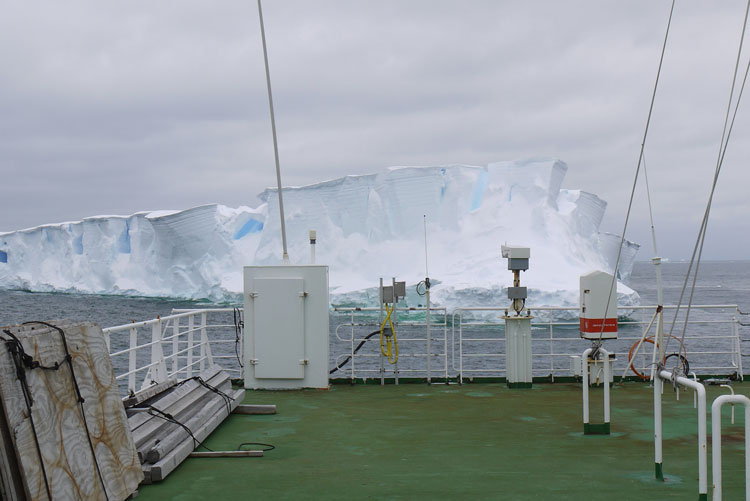Why did the concentration of atmospheric carbon dioxide rise so much and so quickly during the last deglaciation?
During the Last Glacial Maximum, the deep southern Pacific waters were stratified, efficiently accumulating old, CO2 rich waters. Basak and co-authors (2018, see reference below) measured neodymium isotopes in sediment cores that clearly show that when these deep waters became less stratified as the climate warmed they released their carbon which could escape to the atmosphere…what a tempting prospect and beautiful teaser for the forthcoming PAGES-GEOTRACES workshop of December 2018!

Figure: View from RV Polarstern while collecting sediment samples used in the study by Basak et al. Read more at: https://phys.org/news/2018-02-scientists-theory-role-south-pacific.html#jCp
Credit: Dr. Katharina Pahnke
Reference:
Basak, C., Fröllje, H., Lamy, F., Gersonde, R., Benz, V., Anderson, R. F., Molina-Kescher, M., Pahnke, K. (2018). Breakup of last glacial deep stratification in the South Pacific. Science, 359(6378), 900–904. http://doi.org/10.1126/science.aao2473
Read more also at: https://phys.org/news/2018-02-scientists-theory-role-south-pacific.html#jCp
